Target Information
| Target General Information | Top | |||||
|---|---|---|---|---|---|---|
| Target ID |
T50942
(Former ID: TTDC00189)
|
|||||
| Target Name |
Low-affinity nerve growth factor receptor (NGFR)
|
|||||
| Synonyms |
p75 ICD; Tumor necrosis factor receptor superfamily member 16; TNFRSF16; P75neurotrophin receptor (p75(NTR)); P75NTR; P75ICD; NGFreceptor; NGF-P75 receptor; NGF receptor; Lowaffinity neurotrophin receptor p75NTR; Low affinity neurotrophin receptor p75NTR; Gp80-LNGFR; CD271; 75kD-neurotrophin receptor
Click to Show/Hide
|
|||||
| Gene Name |
NGFR
|
|||||
| Target Type |
Successful target
|
[1] | ||||
| Disease | [+] 1 Target-related Diseases | + | ||||
| 1 | Neurotrophic keratitis [ICD-11: 9A74] | |||||
| Function |
Low affinity receptor which can bind to NGF, BDNF, NT-3, and NT-4. Can mediate cell survival as well as cell death of neural cells. Necessary for the circadian oscillation of the clock genes ARNTL/BMAL1, PER1, PER2 and NR1D1 in the suprachiasmatic nucleus (SCN) of the brain and in liver and of the genes involved in glucose and lipid metabolism in the liver. Plays a role in the regulation of the translocation of GLUT4 to the cell surface in adipocytes and skeletal muscle cells in response to insulin, probably by regulating RAB31 activity, and thereby contributes to the regulation of insulin-dependent glucose uptake.
Click to Show/Hide
|
|||||
| BioChemical Class |
Cytokine receptor
|
|||||
| UniProt ID | ||||||
| Sequence |
MGAGATGRAMDGPRLLLLLLLGVSLGGAKEACPTGLYTHSGECCKACNLGEGVAQPCGAN
QTVCEPCLDSVTFSDVVSATEPCKPCTECVGLQSMSAPCVEADDAVCRCAYGYYQDETTG RCEACRVCEAGSGLVFSCQDKQNTVCEECPDGTYSDEANHVDPCLPCTVCEDTERQLREC TRWADAECEEIPGRWITRSTPPEGSDSTAPSTQEPEAPPEQDLIASTVAGVVTTVMGSSQ PVVTRGTTDNLIPVYCSILAAVVVGLVAYIAFKRWNSCKQNKQGANSRPVNQTPPPEGEK LHSDSGISVDSQSLHDQQPHTQTASGQALKGDGGLYSSLPPAKREEVEKLLNGSAGDTWR HLAGELGYQPEHIDSFTHEACPVRALLASWATQDSATLDALLAALRRIQRADLVESLCSE STATSPV Click to Show/Hide
|
|||||
| 3D Structure | Click to Show 3D Structure of This Target | AlphaFold | ||||
| HIT2.0 ID | T08W1L | |||||
| Drugs and Modes of Action | Top | |||||
|---|---|---|---|---|---|---|
| Approved Drug(s) | [+] 1 Approved Drugs | + | ||||
| 1 | Cenegermin | Drug Info | Approved | Neurotrophic keratitis | [1] | |
| Clinical Trial Drug(s) | [+] 2 Clinical Trial Drugs | + | ||||
| 1 | Fulranumab | Drug Info | Phase 3 | Cancer related pain | [2] | |
| 2 | LM11A-31 | Drug Info | Phase 1/2 | Alzheimer disease | [5], [6] | |
| Discontinued Drug(s) | [+] 4 Discontinued Drugs | + | ||||
| 1 | Org-2766 | Drug Info | Discontinued in Phase 3 | Cognitive impairment | [7] | |
| 2 | BU-4514N | Drug Info | Terminated | Alzheimer disease | [8] | |
| 3 | CEP-427 | Drug Info | Terminated | Alzheimer disease | [9] | |
| 4 | ReN-1820 | Drug Info | Terminated | Cystitis | [10] | |
| Mode of Action | [+] 4 Modes of Action | + | ||||
| Agonist | [+] 2 Agonist drugs | + | ||||
| 1 | Cenegermin | Drug Info | [1] | |||
| 2 | TDI-0033 | Drug Info | [11] | |||
| Antagonist | [+] 1 Antagonist drugs | + | ||||
| 1 | Fulranumab | Drug Info | [11] | |||
| Modulator | [+] 6 Modulator drugs | + | ||||
| 1 | LM11A-31 | Drug Info | [12], [13], [14] | |||
| 2 | Org-2766 | Drug Info | [15] | |||
| 3 | BU-4514N | Drug Info | [16] | |||
| 4 | CEP-427 | Drug Info | [11] | |||
| 5 | Nerve growth factor conjugated RAP peptide | Drug Info | [11] | |||
| 6 | TDI-0059 | Drug Info | [11] | |||
| Inhibitor | [+] 1 Inhibitor drugs | + | ||||
| 1 | ReN-1820 | Drug Info | [17] | |||
| Cell-based Target Expression Variations | Top | |||||
|---|---|---|---|---|---|---|
| Cell-based Target Expression Variations | ||||||
| Different Human System Profiles of Target | Top |
|---|---|
|
Human Similarity Proteins
of target is determined by comparing the sequence similarity of all human proteins with the target based on BLAST. The similarity proteins for a target are defined as the proteins with E-value < 0.005 and outside the protein families of the target.
A target that has fewer human similarity proteins outside its family is commonly regarded to possess a greater capacity to avoid undesired interactions and thus increase the possibility of finding successful drugs
(Brief Bioinform, 21: 649-662, 2020).
Human Tissue Distribution
of target is determined from a proteomics study that quantified more than 12,000 genes across 32 normal human tissues. Tissue Specificity (TS) score was used to define the enrichment of target across tissues.
The distribution of targets among different tissues or organs need to be taken into consideration when assessing the target druggability, as it is generally accepted that the wider the target distribution, the greater the concern over potential adverse effects
(Nat Rev Drug Discov, 20: 64-81, 2021).
Human Pathway Affiliation
of target is determined by the life-essential pathways provided on KEGG database. The target-affiliated pathways were defined based on the following two criteria (a) the pathways of the studied target should be life-essential for both healthy individuals and patients, and (b) the studied target should occupy an upstream position in the pathways and therefore had the ability to regulate biological function.
Targets involved in a fewer pathways have greater likelihood to be successfully developed, while those associated with more human pathways increase the chance of undesirable interferences with other human processes
(Pharmacol Rev, 58: 259-279, 2006).
Biological Network Descriptors
of target is determined based on a human protein-protein interactions (PPI) network consisting of 9,309 proteins and 52,713 PPIs, which were with a high confidence score of ≥ 0.95 collected from STRING database.
The network properties of targets based on protein-protein interactions (PPIs) have been widely adopted for the assessment of target’s druggability. Proteins with high node degree tend to have a high impact on network function through multiple interactions, while proteins with high betweenness centrality are regarded to be central for communication in interaction networks and regulate the flow of signaling information
(Front Pharmacol, 9, 1245, 2018;
Curr Opin Struct Biol. 44:134-142, 2017).
Human Similarity Proteins
Human Tissue Distribution
Human Pathway Affiliation
Biological Network Descriptors
|
|
|
There is no similarity protein (E value < 0.005) for this target
|
|
Note:
If a protein has TS (tissue specficity) scores at least in one tissue >= 2.5, this protein is called tissue-enriched (including tissue-enriched-but-not-specific and tissue-specific). In the plots, the vertical lines are at thresholds 2.5 and 4.
|
| KEGG Pathway | Pathway ID | Affiliated Target | Pathway Map |
|---|---|---|---|
| Virion - Lyssavirus | hsa03265 | Affiliated Target |
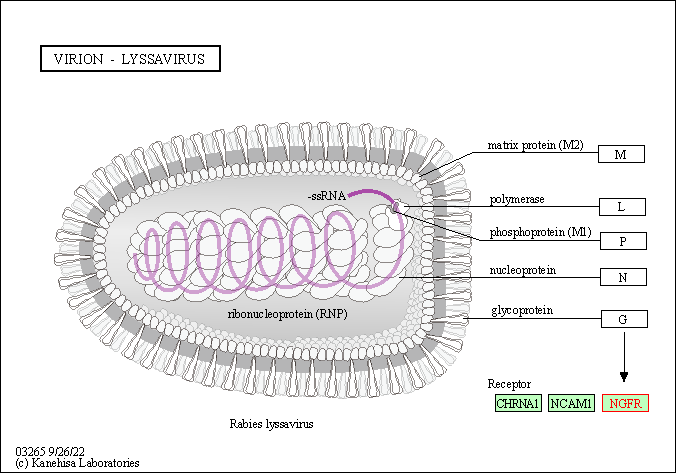
|
| Class: Genetic Information Processing => Information processing in viruses | Pathway Hierarchy | ||
| MAPK signaling pathway | hsa04010 | Affiliated Target |
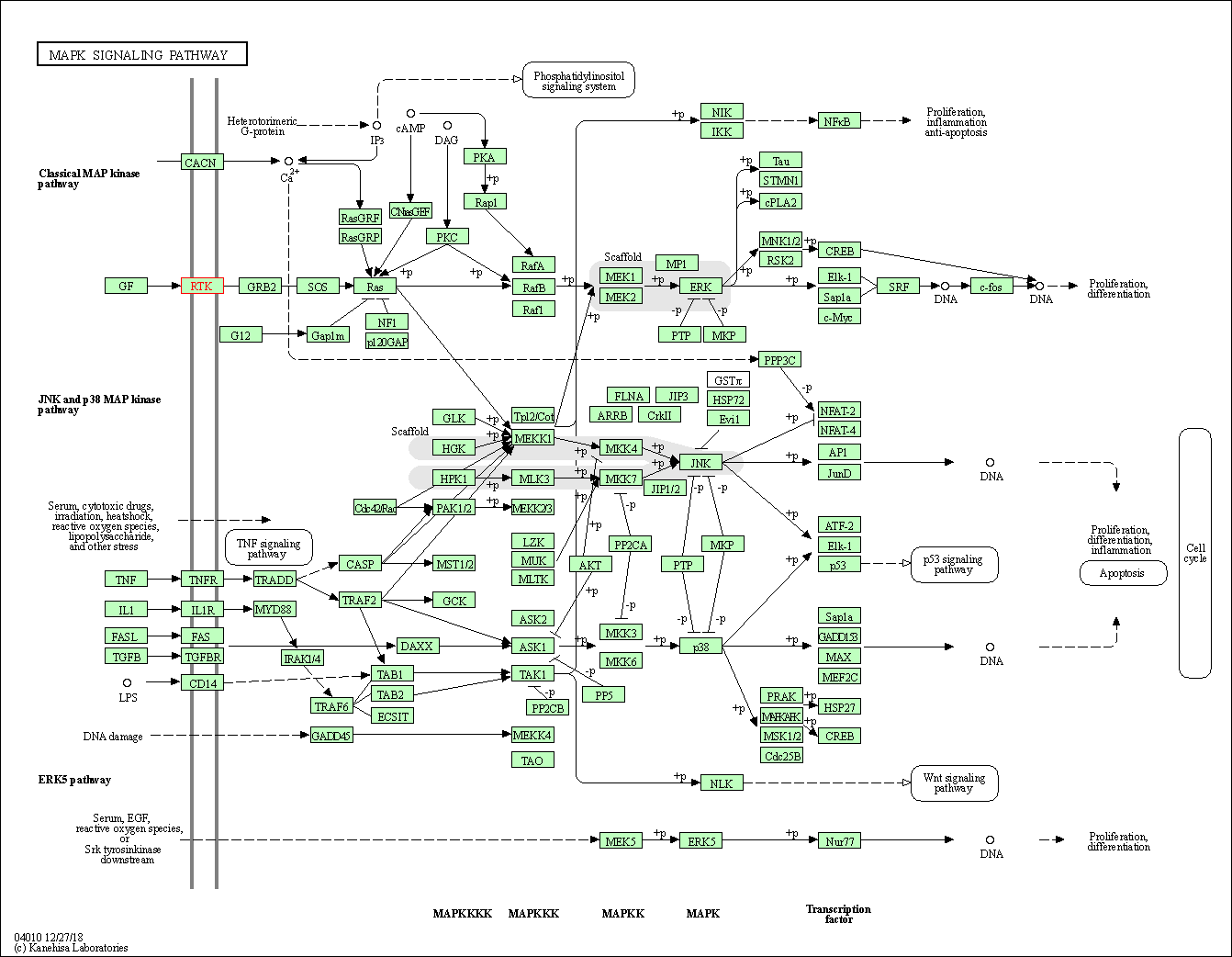
|
| Class: Environmental Information Processing => Signal transduction | Pathway Hierarchy | ||
| Ras signaling pathway | hsa04014 | Affiliated Target |

|
| Class: Environmental Information Processing => Signal transduction | Pathway Hierarchy | ||
| Rap1 signaling pathway | hsa04015 | Affiliated Target |
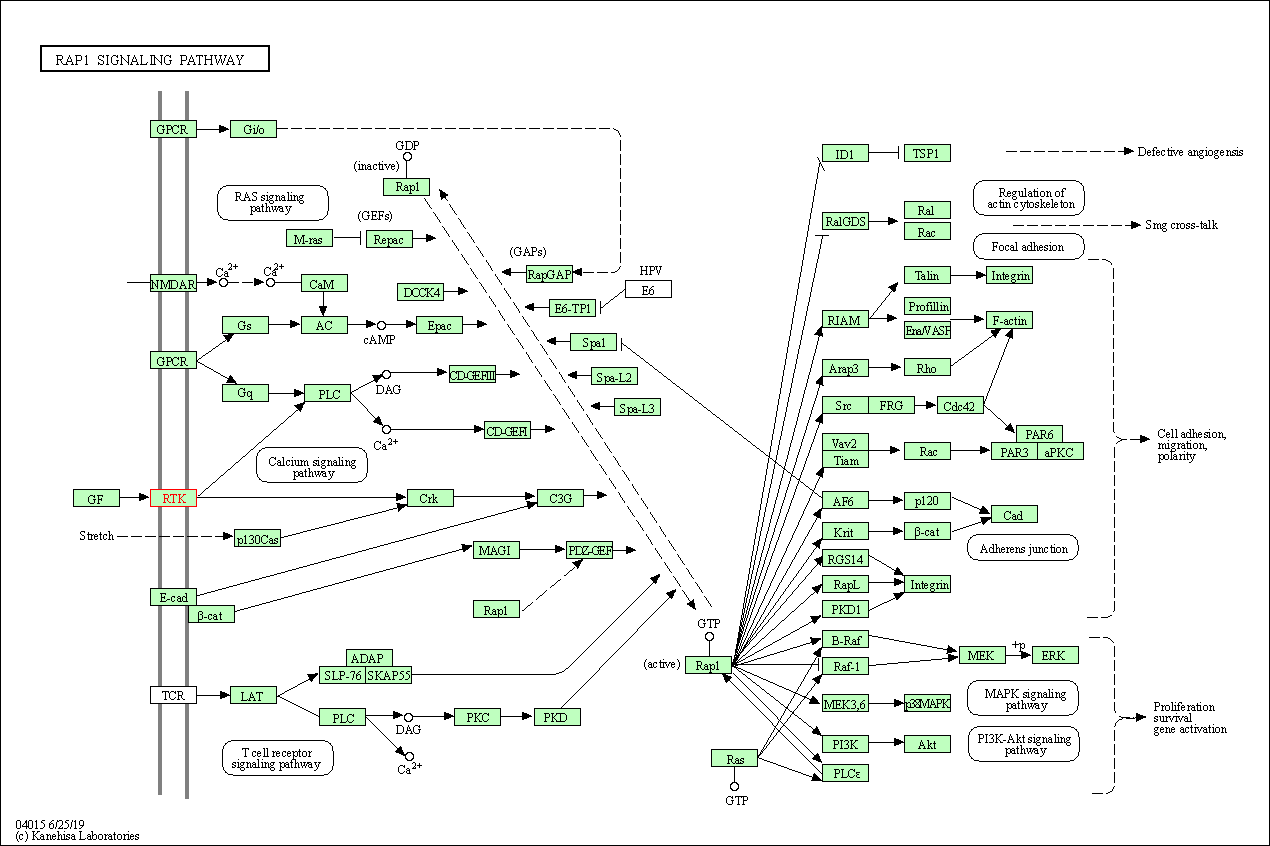
|
| Class: Environmental Information Processing => Signal transduction | Pathway Hierarchy | ||
| Cytokine-cytokine receptor interaction | hsa04060 | Affiliated Target |
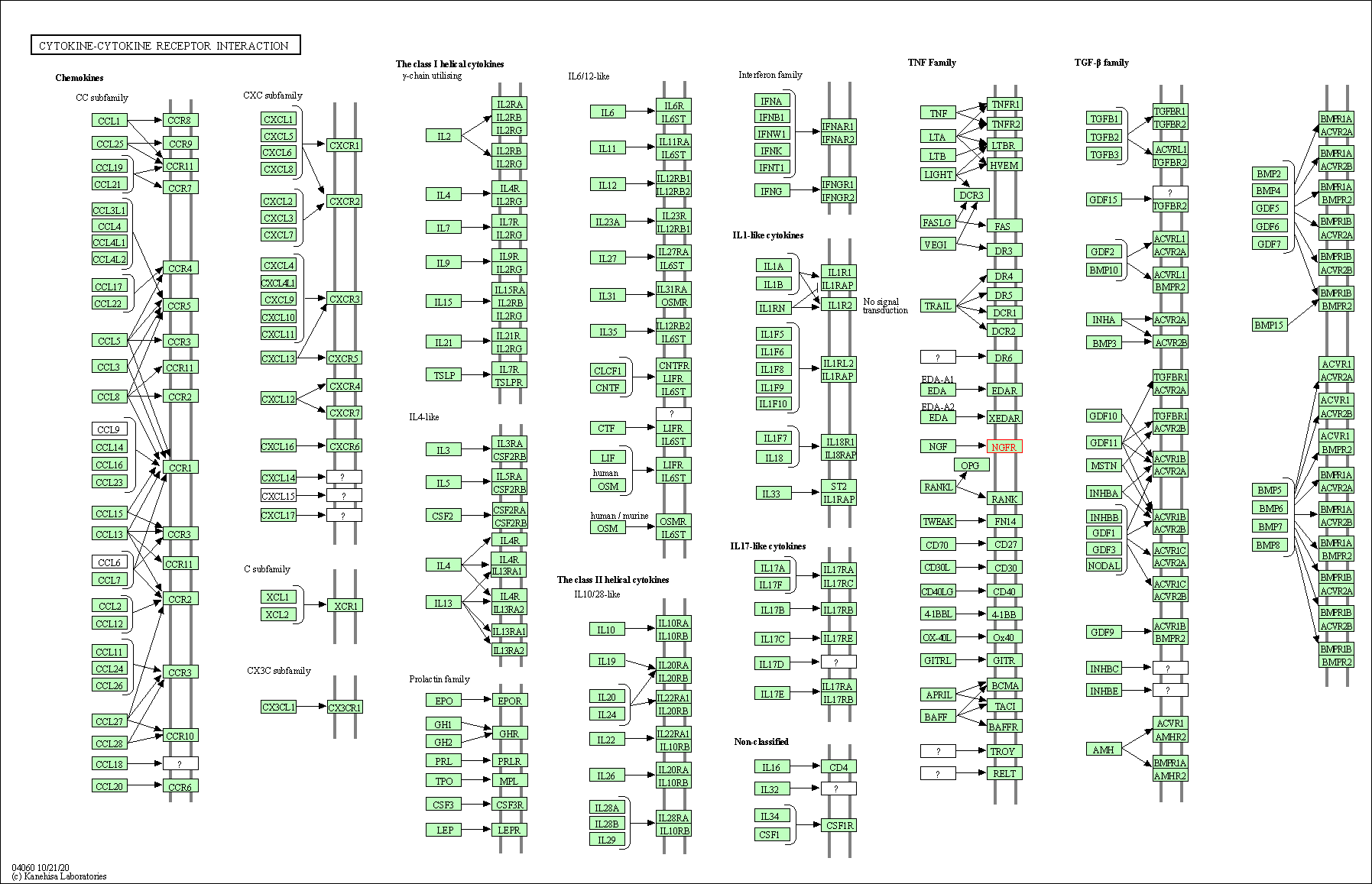
|
| Class: Environmental Information Processing => Signaling molecules and interaction | Pathway Hierarchy | ||
| PI3K-Akt signaling pathway | hsa04151 | Affiliated Target |
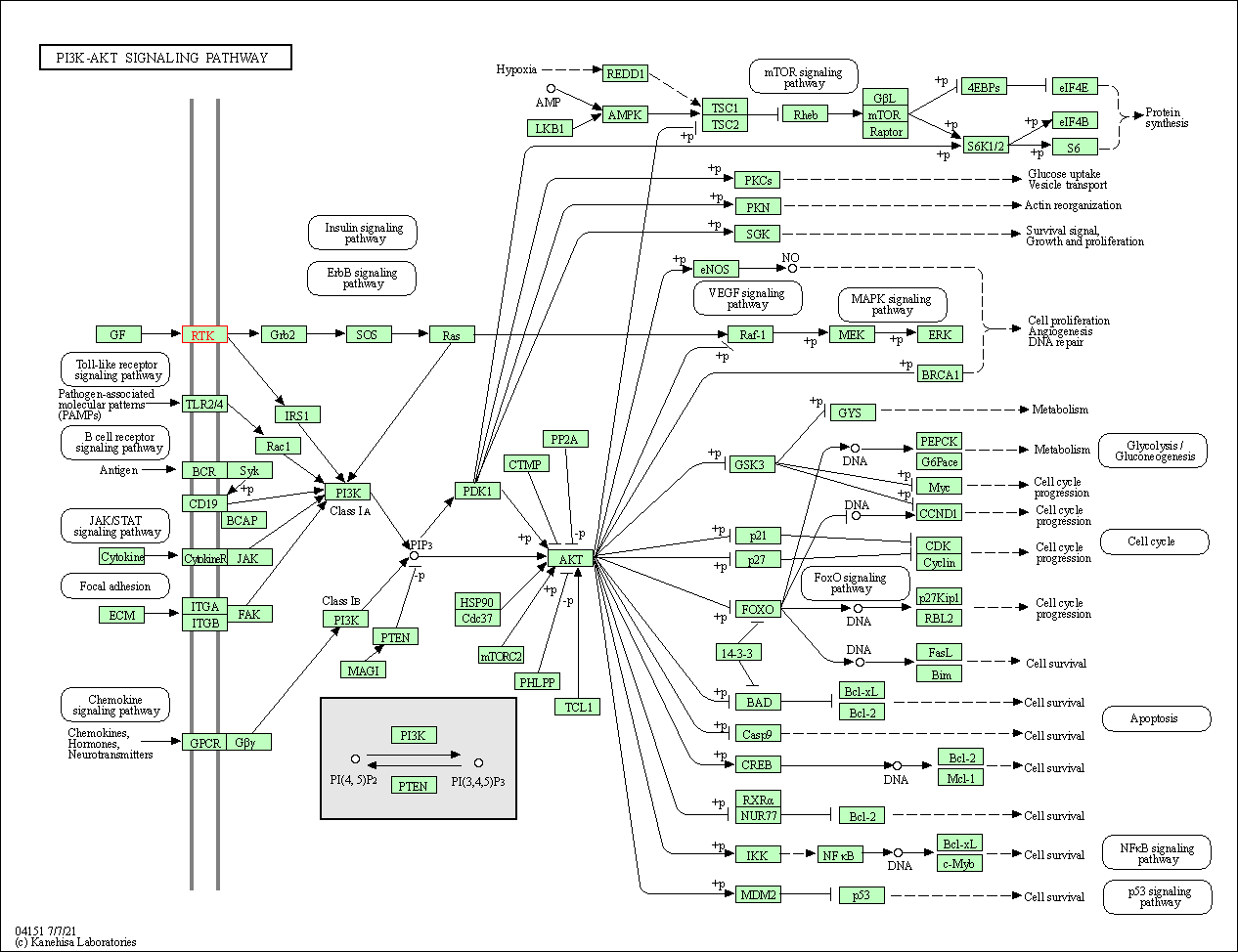
|
| Class: Environmental Information Processing => Signal transduction | Pathway Hierarchy | ||
| Apoptosis - multiple species | hsa04215 | Affiliated Target |
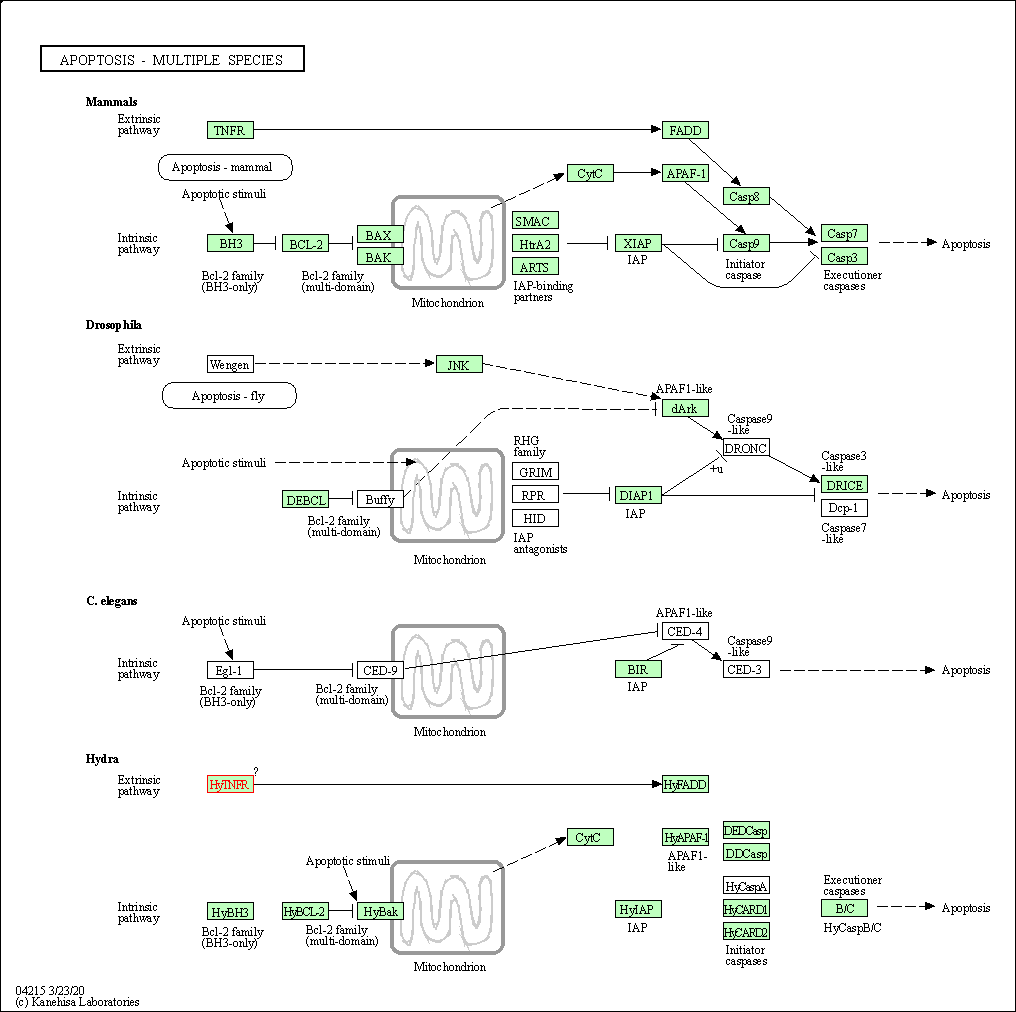
|
| Class: Cellular Processes => Cell growth and death | Pathway Hierarchy | ||
| Neurotrophin signaling pathway | hsa04722 | Affiliated Target |
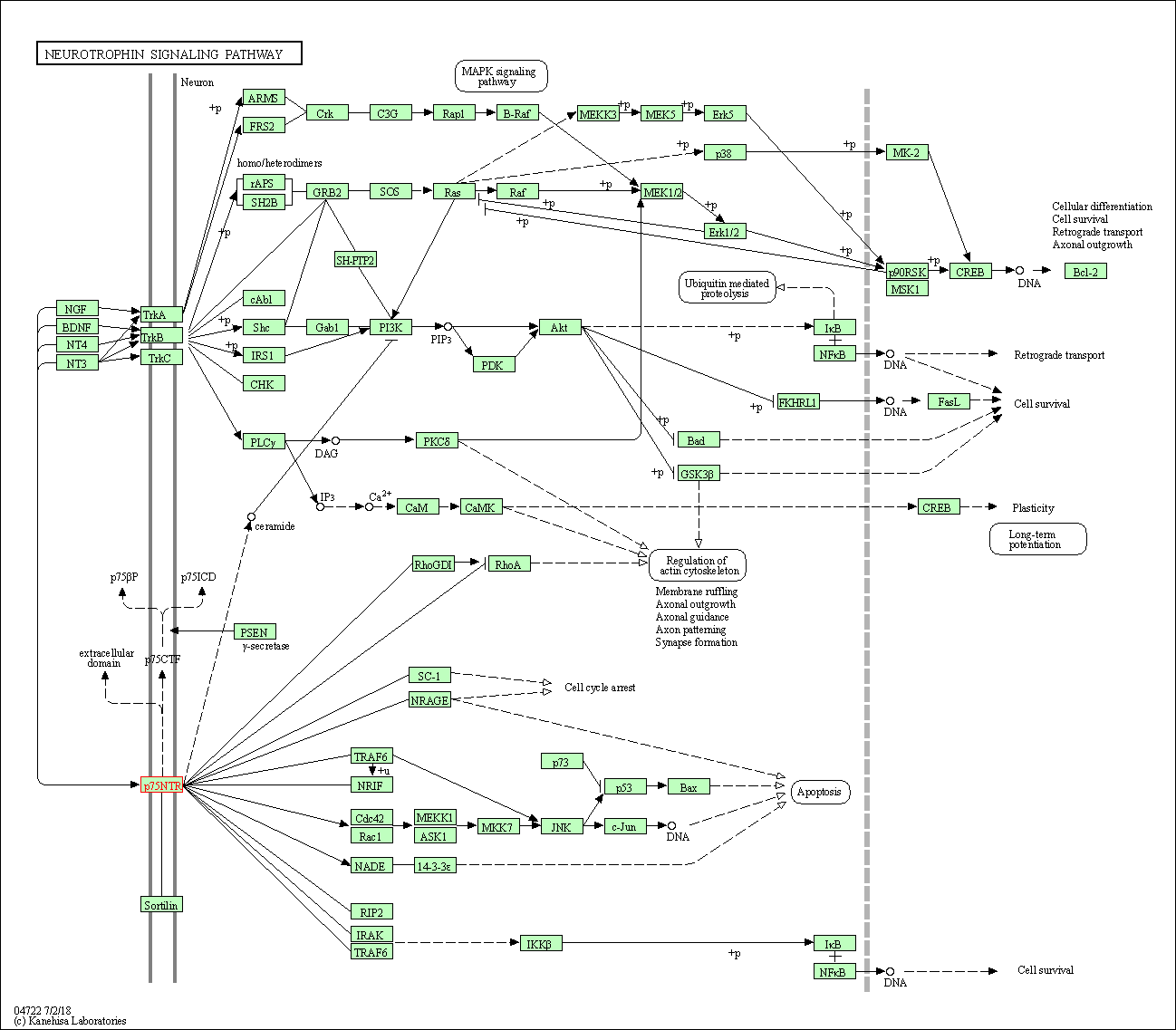
|
| Class: Organismal Systems => Nervous system | Pathway Hierarchy | ||
| Click to Show/Hide the Information of Affiliated Human Pathways | |||
| Degree | 28 | Degree centrality | 3.01E-03 | Betweenness centrality | 2.90E-03 |
|---|---|---|---|---|---|
| Closeness centrality | 2.51E-01 | Radiality | 1.44E+01 | Clustering coefficient | 1.06E-01 |
| Neighborhood connectivity | 3.00E+01 | Topological coefficient | 4.63E-02 | Eccentricity | 11 |
| Download | Click to Download the Full PPI Network of This Target | ||||
| Chemical Structure based Activity Landscape of Target | Top |
|---|---|
| Drug Property Profile of Target | Top | |
|---|---|---|
| (1) Molecular Weight (mw) based Drug Clustering | (2) Octanol/Water Partition Coefficient (xlogp) based Drug Clustering | |
|
|
||
| (3) Hydrogen Bond Donor Count (hbonddonor) based Drug Clustering | (4) Hydrogen Bond Acceptor Count (hbondacc) based Drug Clustering | |
|
|
||
| (5) Rotatable Bond Count (rotbonds) based Drug Clustering | (6) Topological Polar Surface Area (polararea) based Drug Clustering | |
|
|
||
| "RO5" indicates the cutoff set by lipinski's rule of five; "D123AB" colored in GREEN denotes the no violation of any cutoff in lipinski's rule of five; "D123AB" colored in PURPLE refers to the violation of only one cutoff in lipinski's rule of five; "D123AB" colored in BLACK represents the violation of more than one cutoffs in lipinski's rule of five | ||
| Target Poor or Non Binders | Top | |||||
|---|---|---|---|---|---|---|
| Target Poor or Non Binders | ||||||
| Target Regulators | Top | |||||
|---|---|---|---|---|---|---|
| Target-regulating microRNAs | ||||||
| Target-interacting Proteins | ||||||
| Target Profiles in Patients | Top | |||||
|---|---|---|---|---|---|---|
| Target Expression Profile (TEP) | ||||||
| Target Affiliated Biological Pathways | Top | |||||
|---|---|---|---|---|---|---|
| KEGG Pathway | [+] 6 KEGG Pathways | + | ||||
| 1 | Ras signaling pathway | |||||
| 2 | Rap1 signaling pathway | |||||
| 3 | Cytokine-cytokine receptor interaction | |||||
| 4 | PI3K-Akt signaling pathway | |||||
| 5 | Neurotrophin signaling pathway | |||||
| 6 | Transcriptional misregulation in cancer | |||||
| PID Pathway | [+] 2 PID Pathways | + | ||||
| 1 | p75(NTR)-mediated signaling | |||||
| 2 | Neurotrophic factor-mediated Trk receptor signaling | |||||
| Reactome | [+] 9 Reactome Pathways | + | ||||
| 1 | Axonal growth inhibition (RHOA activation) | |||||
| 2 | NRAGE signals death through JNK | |||||
| 3 | p75NTR negatively regulates cell cycle via SC1 | |||||
| 4 | Regulated proteolysis of p75NTR | |||||
| 5 | NADE modulates death signalling | |||||
| 6 | NRIF signals cell death from the nucleus | |||||
| 7 | p75NTR recruits signalling complexes | |||||
| 8 | NF-kB is activated and signals survival | |||||
| 9 | Axonal growth stimulation | |||||
| WikiPathways | [+] 3 WikiPathways | + | ||||
| 1 | Spinal Cord Injury | |||||
| 2 | BDNF signaling pathway | |||||
| 3 | Signalling by NGF | |||||
| Target-Related Models and Studies | Top | |||||
|---|---|---|---|---|---|---|
| Target Validation | ||||||
| References | Top | |||||
|---|---|---|---|---|---|---|
| REF 1 | 2018 FDA drug approvals.Nat Rev Drug Discov. 2019 Feb;18(2):85-89. | |||||
| REF 2 | ClinicalTrials.gov (NCT02336685) Study of Efficacy, Safety of Fulranumab Adjunctive Use in OA of Hip or Knee, PAI3001. U.S. National Institutes of Health. | |||||
| REF 3 | ClinicalTrials.gov (NCT00041795) Neotrofin for Treatment of Chemotherapy-Induced Peripheral Neuropathy. U.S. National Institutes of Health. | |||||
| REF 4 | ClinicalTrials.gov (NCT03069014) Study of LM11A-31-BHS in Mild-moderate AD Patients. U.S. National Institutes of Health. | |||||
| REF 5 | Clinical pipeline report, company report or official report of the Pharmaceutical Research and Manufacturers of America (PhRMA) | |||||
| REF 6 | Clinical pipeline report, company report or official report of the Pharmaceutical Research and Manufacturers of America (PhRMA) | |||||
| REF 7 | Trusted, scientifically sound profiles of drug programs, clinical trials, safety reports, and company deals, written by scientists. Springer. 2015. Adis Insight (drug id 800000019) | |||||
| REF 8 | Trusted, scientifically sound profiles of drug programs, clinical trials, safety reports, and company deals, written by scientists. Springer. 2015. Adis Insight (drug id 800005173) | |||||
| REF 9 | Trusted, scientifically sound profiles of drug programs, clinical trials, safety reports, and company deals, written by scientists. Springer. 2015. Adis Insight (drug id 800006555) | |||||
| REF 10 | Trusted, scientifically sound profiles of drug programs, clinical trials, safety reports, and company deals, written by scientists. Springer. 2015. Adis Insight (drug id 800017720) | |||||
| REF 11 | URL: http://www.guidetopharmacology.org Nucleic Acids Res. 2015 Oct 12. pii: gkv1037. The IUPHAR/BPS Guide to PHARMACOLOGY in 2016: towards curated quantitative interactions between 1300 protein targets and 6000 ligands. (Target id: 1888). | |||||
| REF 12 | Small molecule p75NTR ligand prevents cognitive deficits and neurite degeneration in an Alzheimer's mouse model.Neurobiol Aging.2013 Aug;34(8):2052-63. | |||||
| REF 13 | A small molecule p75(NTR) ligand protects neurogenesis after traumatic brain injury.Stem Cells.2013 Nov;31(11):2561-74. | |||||
| REF 14 | A small molecule p75NTR ligand, LM11A-31, reverses cholinergic neurite dystrophy in Alzheimer's disease mouse models with mid- to late-stage disease progression.PLoS One.2014 Aug 25;9(8):e102136. | |||||
| REF 15 | Effects of the ACTH4-9 analog Org2766 on brain plasticity: modulation of excitatory neurotransmission. Psychoneuroendocrinology. 1992 Aug;17(4):315-25. | |||||
| REF 16 | A new neuritogenetic compound BU-4514N produced by Microtetraspora sp. J Antibiot (Tokyo). 1993 Jun;46(6):875-83. | |||||
| REF 17 | Phosphorylation of Extracellular Signal-Regulated Kinases (pERK1/2) in Bladder Afferent Pathways with Cyclophosphamide (CYP)-Induced Cystitis. Neuroscience. 2009 November 10; 163(4): 1353-1362. | |||||
If You Find Any Error in Data or Bug in Web Service, Please Kindly Report It to Dr. Zhou and Dr. Zhang.

